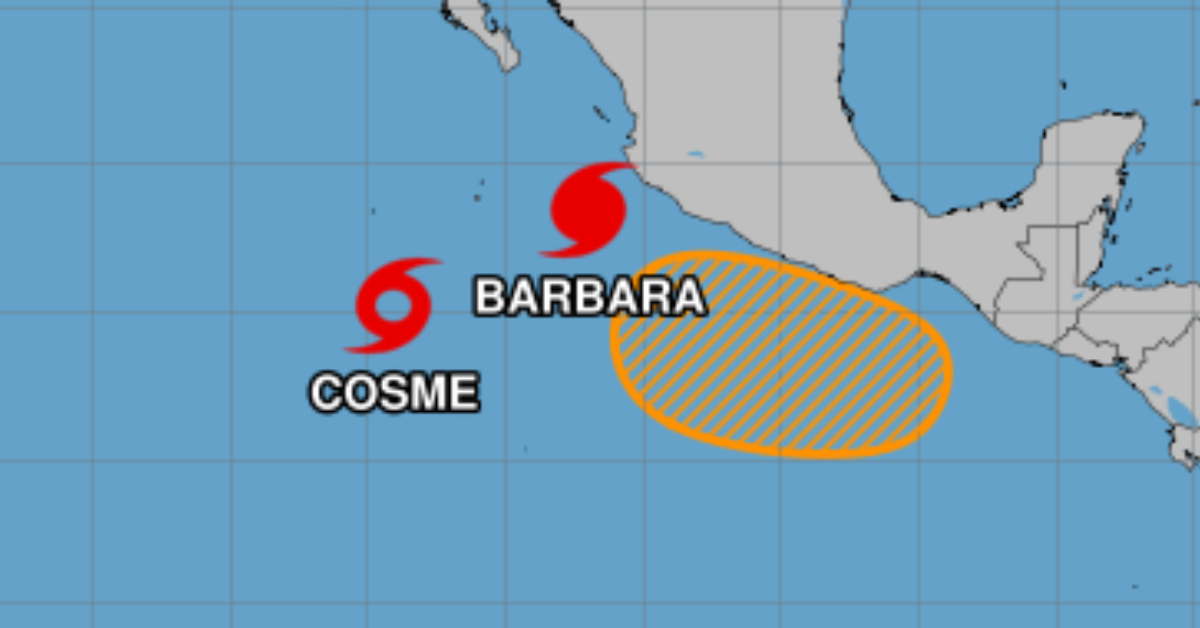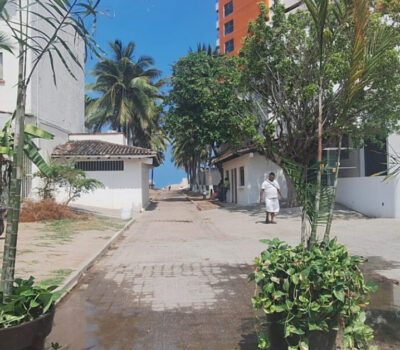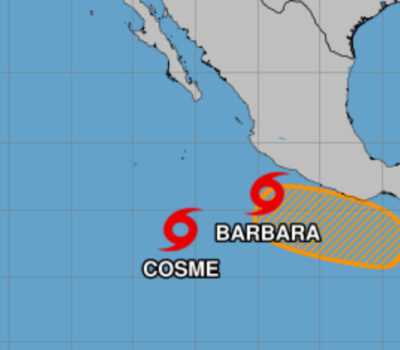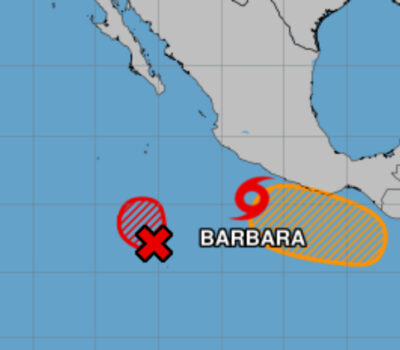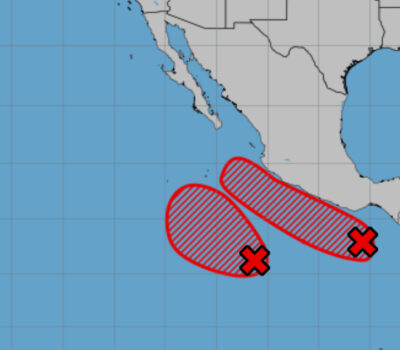Hurricane Barbara likely peaked and will weaken as it moves into cooler waters and drier air. Life-threatening surf and gusty winds will affect the southwestern Mexico coast.
Hurricane Barbara, which briefly reached hurricane strength, has likely passed its peak intensity and is set to weaken steadily as it moves northwestward off the coast of southwestern Mexico. According to the National Hurricane Center (NHC), environmental conditions ahead of the storm will become increasingly hostile, with cooler sea surface temperatures and a drier, more stable air mass chipping away at Barbara’s convective organization. Forecasters expect the system to lose its tropical characteristics and turn post-tropical within the next 36 hours.
By around 60 hours from now, the remnants of Barbara are forecast to open into a trough and eventually dissipate. The NHC’s latest outlook shows that the combination of cooler waters—below the roughly 26°C threshold hurricanes need to sustain themselves—and entrainment of dry air will rob Barbara of its warm-core structure. As the storm transitions, its wind field is expected to expand slightly, but peak winds will diminish below tropical storm force well before the midpoint of this forecast period.
Even as Barbara weakens, it will continue to generate hazardous surf along Mexico’s Pacific shoreline. Swells from the system are already impacting beaches from Guerrero to Oaxaca and will linger over the next several days. The NHC warns these swells will create life-threatening surf and rip-current conditions, posing serious risks to swimmers, surfers, and anyone venturing into the surf zone. Beachgoers and coastal communities are advised to heed local weather office bulletins and avoid entering the water until conditions improve.
Gusty onshore winds will accompany the surf hazards, particularly tonight along coastal areas of Guerrero and Oaxaca. Although sustained tropical storm–force winds are no longer a threat, gusts could still reach 45–55 mph in exposed spots. These gusts may cause brief power flickers, downed palm fronds, and light debris in coastal towns. Residents should secure loose outdoor objects and exercise caution when traveling near the shore, especially after dark when visibility is reduced.
Tourism operators and expats living in beachfront communities should remain alert to changing weather updates. Hotels and tour companies along the Costa Grande and Costa Chica are already adjusting activity schedules, postponing kayak tours and sunset cruises until surf conditions subside. Travelers planning beach days or water sports should contact their providers for the latest advisories; cancellations and schedule changes are possible with little notice.
Barbara’s rapid development and swift decay underscore the challenges of forecasting short-lived tropical cyclones. While this storm will not make landfall as a hurricane, its impacts at sea and along the coast merit respect. Mariners, fishermen, and off-shore workers should stay clear of the affected waters, and coastal residents should keep an eye on updates from the NHC and local meteorological offices. With cooler waters ahead and dry air infiltration, Barbara will soon fade from the tropics, but its remaining hazards will persist until the system fully dissipates.
Stay tuned to official bulletins for any changes in the forecast track or timing. Public safety depends on timely information—check your local weather office for surf and wind advisories before making plans along Mexico’s Pacific shores.
Hurricane Barbara likely peaked and will weaken as it moves into cooler waters and drier air. Life-threatening surf and gusty winds . . .

